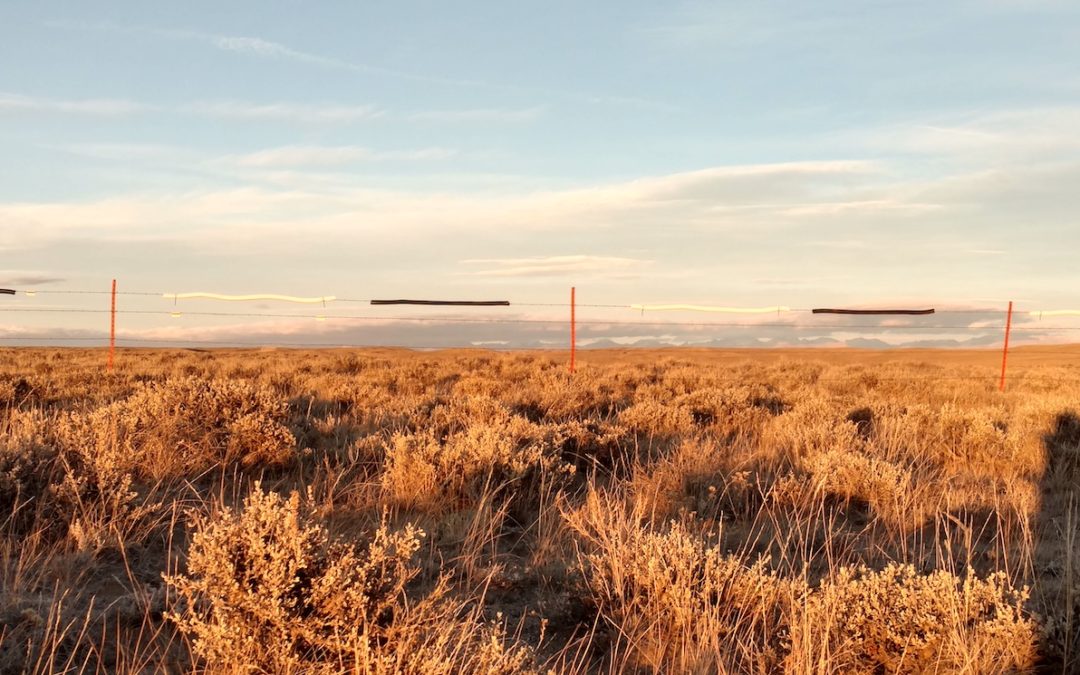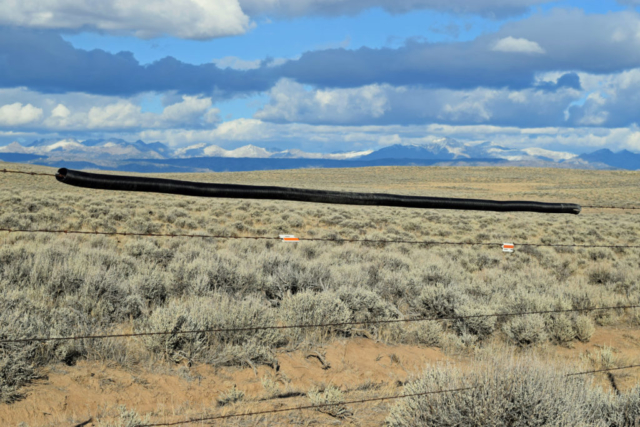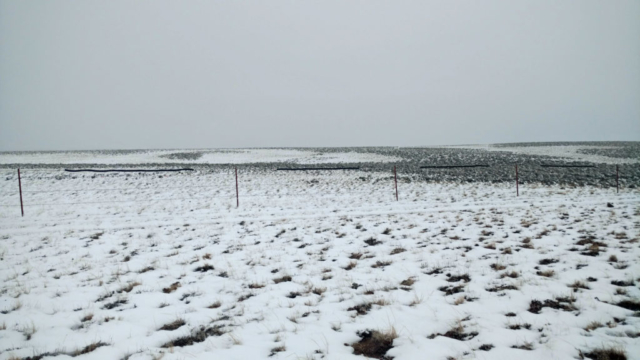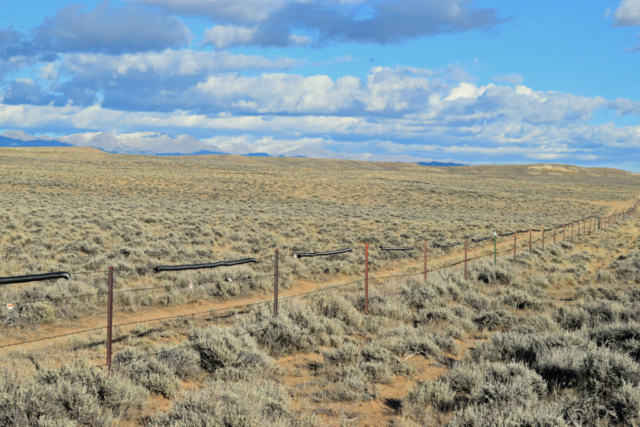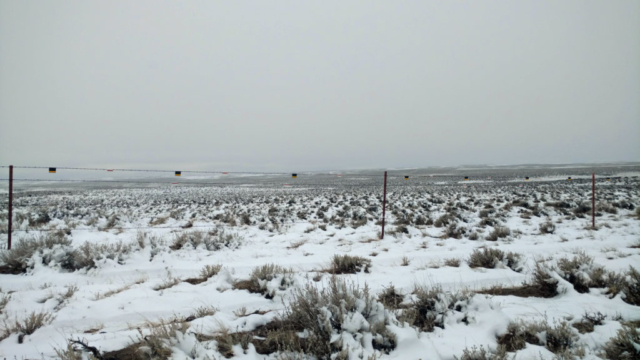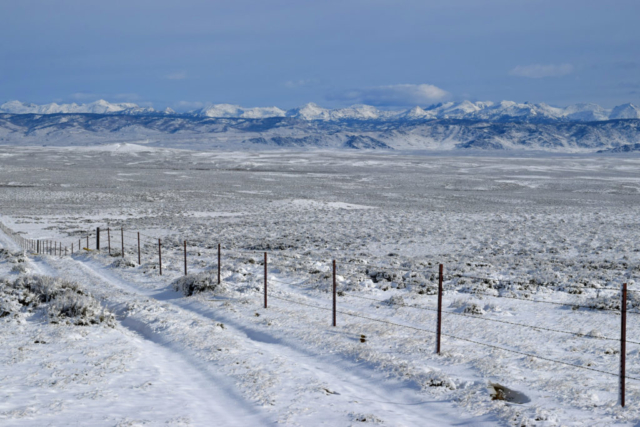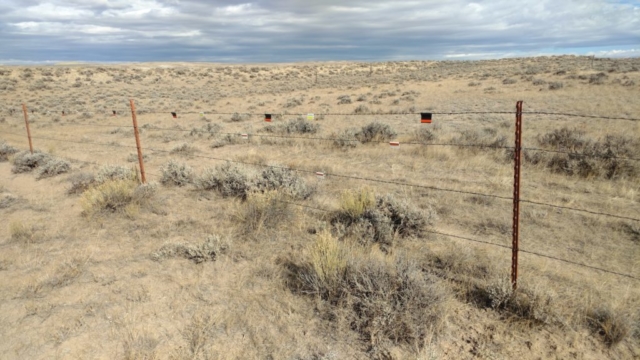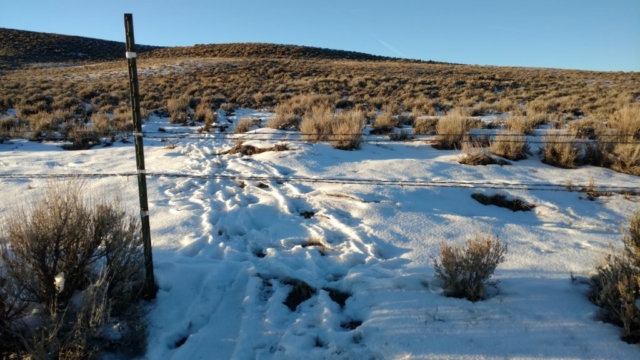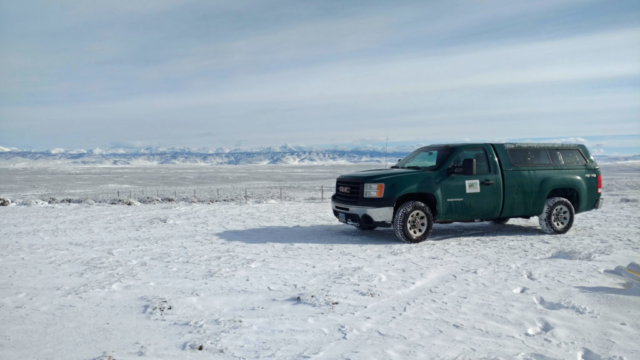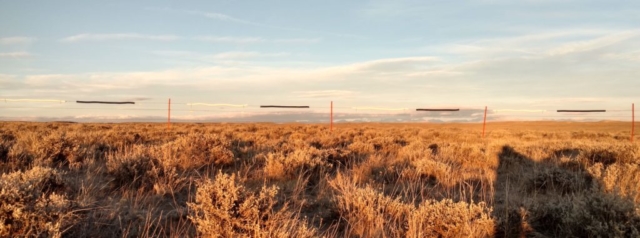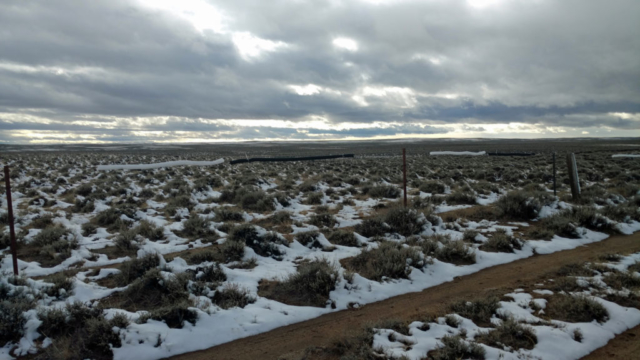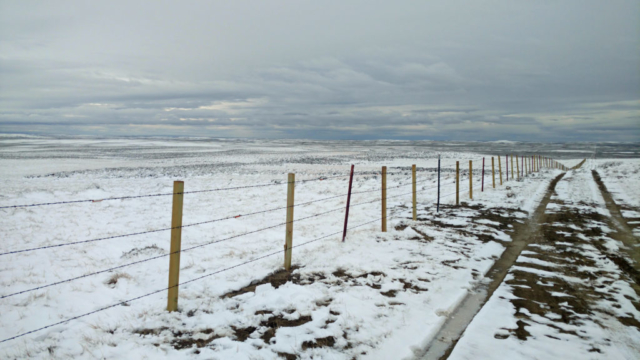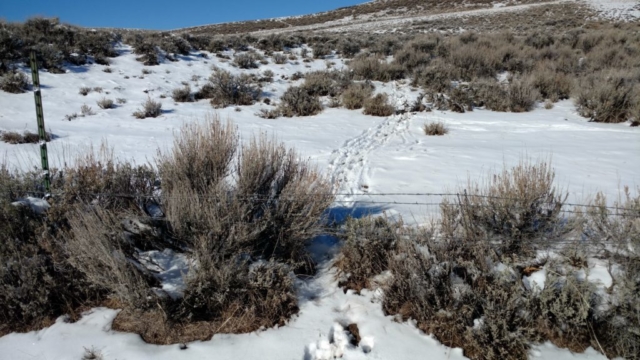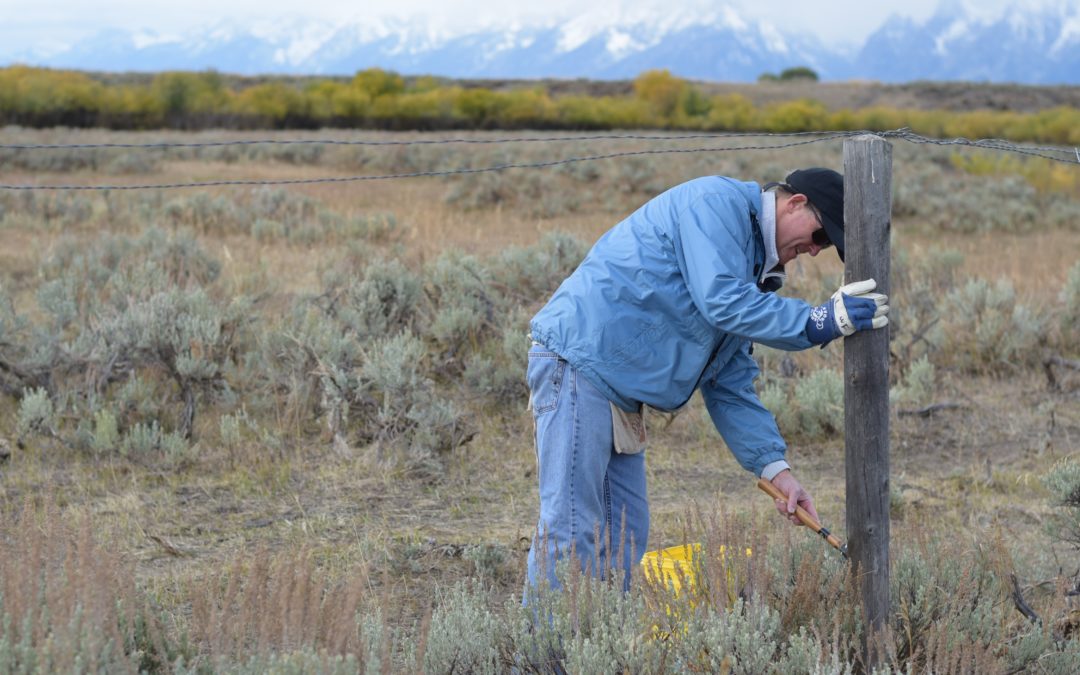
by jhwildlife | Feb 20, 2019 | Blog
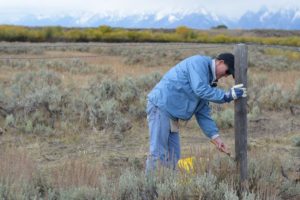 January, the Jackson Hole Wildlife Foundation welcomed Bruce Pasfield to the position of Executive Board President. Bruce enters the role with multiple years of existing board experience and will replace outgoing President Aly Courtemanch, who fulfilled her six-year term at the end of 2018. We wasted no time seating our new president in the “JHWF interview hot-seat” to have Bruce introduce himself, and a bit about his vision for the organization going forward:
January, the Jackson Hole Wildlife Foundation welcomed Bruce Pasfield to the position of Executive Board President. Bruce enters the role with multiple years of existing board experience and will replace outgoing President Aly Courtemanch, who fulfilled her six-year term at the end of 2018. We wasted no time seating our new president in the “JHWF interview hot-seat” to have Bruce introduce himself, and a bit about his vision for the organization going forward:
Q: Welcome Bruce! We’re excited to introduce you as our Board President. To start off, how did you first hear about JHWF? Was there anything in particular which initially drew you to the organization?
A: Thanks Kyle. I’m excited to take over as Board President. I’ve been involved in conservation issues since a young age and when my wife and I decided to move to Jackson full time, it only made sense for us to explore the local non-profit community options. Jackson has a multitude of non-profits, so it can be a little daunting to choose between all the alternatives. What drew me to the JHWF was the people and the mission. The board and staff were welcoming and known for their cooperative efforts to make the community more wildlife friendly. Once I learned about the people and the mission, it was a pretty easy choice for me to join the board and now to lead it.
Q: Would you be willing to share a little about your professional background outside of your work with the Jackson Hole Wildlife Foundation (JHWF)?
A: For many years I was a U.S. Department of Justice trial attorney who specialized in prosecuting environmental crimes. Think Exxon Valdez or the more recent VW scandal. These cases were incredibly interesting and demanding. Prosecuting court cases against Fortune 500 companies where outcomes can be multimillion dollar fines or executives landing behind bars, you have to be on your game. After 20 years of government service, I decide to try my hand at the private sector and became a partner at the law firm of Alston & Bird. Private practice provides more entrepreneurial opportunities which I enjoy. I found working on both sides of the fence has given me a broader perspective on negotiating resolutions as well as a deeper understanding of environmental law. The creative aspect of this work is something I hope to employ while President of the JHWF.
Q: What keeps you busy in your spare time?
A: Spare time, what spare time? Seriously though, I’m slowing down on the legal work as I phase into retirement. Billable hours are less of a focus now and that has opened up a whole new universe for me. For starters, my wife Nancy and I can now spend more quality time together which is refreshing after the unrelenting pace of two professionals raising children in the Washington D.C. area. Beyond that I’m one of the assistant coaches for the Jackson Hole High School football team and its been a lot of fun helping to turn that program around. And when I’m not busy with the Broncs or JHWF, you can usually find me doing some form of skiing in the winter and on the trial hiking or birding in the summer. I’m also working on my golf game and learning how to fly fish.
Q: You’re stepping into a new role as board president, but you’ve held a position on our board for a few years. Based on your experience as board member, what has JHWF been able to achieve that you are especially proud of, and where do you see opportunities for growth within the organization?
A: Removing 200 miles of fence in 25 years is an incredible accomplishment and probably the most tangible success of the JHWF. I’m also just awed to be associated with past President Aly Courtemanch who is one of the most knowledgeable and dedicated wildlife biologist I’ve ever met. I’m really proud of her stewardship of JHWF over the last six years and hope I can deliver as well as she did. In terms of growth, I see opportunities in all our program areas. From fence removal to mitigating wildlife vehicle collisions to mapping wildlife movement, there is a great deal more that can be done voluntarily to make the valley more permeable for wildlife. I also see opportunities to make the community more aware of our work and potentially expand it to other communities such as Pinedale, Dubois and over the hill in Victor and Driggs. We won’t grow for growth’s sake, but to the extent we can help other communities duplicate some of our programs it would be a win win.
Q: Apart from serving on the board, you’ve also been an active member on our volunteer “fence team.” What about these projects keeps you coming back? Do you have any advice for people who are looking for ways to get involved with conservation efforts here in Jackson, or in their own communities?
A: The fence projects are so rewarding because they are so immediate and tangible. Fence teams remove or modify fencing and the results are in front of your eyes by the end of the day. If you haven’t been involved in conservation efforts and are looking for a way to become more active, the fence projects are a great way to start. Just sign up, show up, get some basic instruction on fence removal and you are on your way. Boom! If you want more, we have plenty of projects where we can use volunteer help. In fact, most of our programs have a large volunteer component. All of these projects are a great way to connect and meet people in the community.
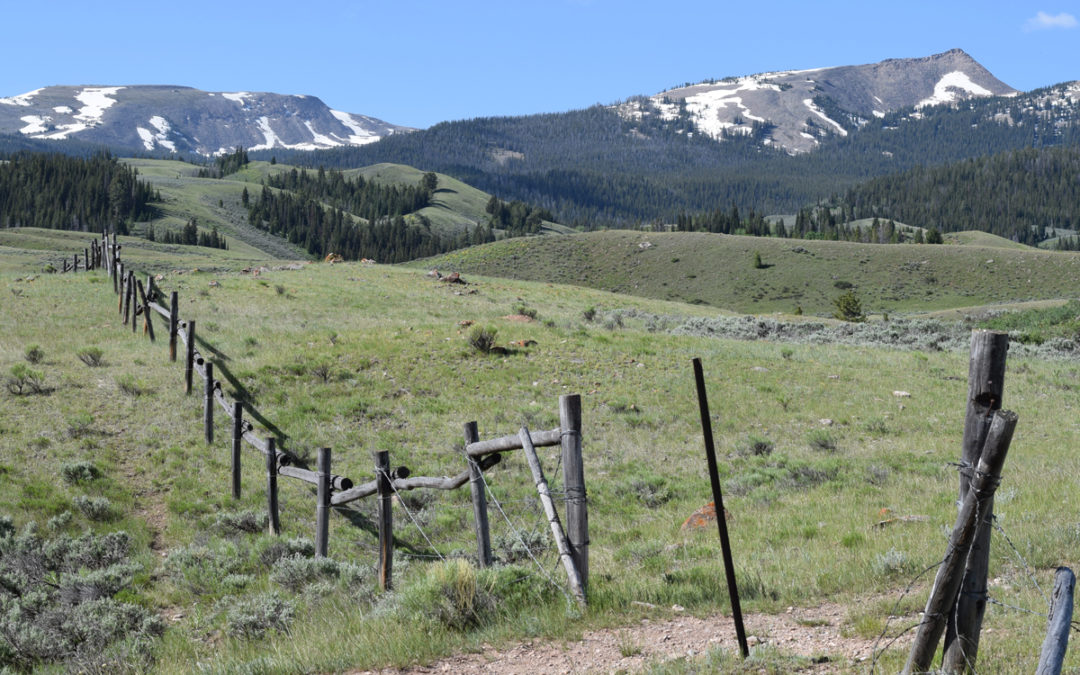
by jhwildlife | Jan 25, 2019 | Blog
Kyle Kissock – Communications Manager
A paper published last September in the scientific journal Biological Conservation emphasizes the need for both scientists and the public to better understand the impact fences are having on wildlife and ecosystems. Click here to read.
According to the authors, while fence impacts have been researched on local, species by species basis, there has been little effort to understand larger effects of fence infrastructure on “a multitude of species, population dynamics, or ecosystem processes.”
The study acknowledges “fence ecology” is relatively understudied compared to research on habitat fragmentation by other forms of human infrastructure. This relative “invisibility” of the impact on wildlife by fences is especially troubling, given that length of landscape spanned by fences is often times much greater than better-known barriers such as roads or energy infrastructure, especially in the West.
For example, a resourced we often cite here at JHWF is a study that monitored ungulate mortalities along 600 miles of Colorado and Utah fence for two years. It found that at least one ungulate died of entanglement per year for every 2.5 miles of fence. While we believe these numbers alone are enough to spur a broad call to action, what remains to be understood is the impact of fences on the broader ecosystem based on mortality rates. Further, are species besides ungulates being effected? Have fences changed migration patterns? Do they reduce survival rates even among the animals that avoid entanglement?
Just as increased research will ideally help identify problematic fences posing as bottlenecks and barriers to wildlife movement, this paper also predicts more attention given to fences will help identify locations where fences are having minimal, or even positive impacts on wildlife (i.e. protection from poaching or exclusion from busy roadways).
The authors acknowledge the reality that the study of fence ecology must involve human components, and allow “cultural norms and realities” to permeate ecological discussions. Impacts on wildlife that come to light through increased research must be balanced with the social needs of land owners and land managers. The reality is that many fences cannot simply be removed from the landscape, even if they do have negative impacts.
At JHWF we’re excited to see if “fence ecology” does take off within the scientific community. New science can help us better focus our work efforts to critical areas and lead us into exciting, new frontiers of fence removal and modification. We agree that more people seeing fences for their true impact is a good thing. A broader societal understanding of the realities regarding fences can only help, as we seek the best way to reduce barriers to wildlife movement while respecting the cultural necessity of fences on our Western landscape.

by jhwildlife | Jan 10, 2019 | Blog
Kyle Kissock – Communications Manager
This November, we released a survey to explore how Nature Mapping Jackson Hole (NMJH) could be improved to create a more engaging experience for the NMJH community.
Our flagship citizen-science program, NMJH has existed under the umbrella of the Jackson Hole Wildlife Foundation (JHWF) since 2011. NMJH currently includes 678 active volunteers who have collected over 59,000 wildlife observations! Over the years, NMJH has strived towards several goals: 1) keep common species common by increasing citizen’s knowledge of an appreciation for wildlife 2) engage citizens in long-term wildlife data collection 3) inform management decisions that favor wildlife sustainability and 4) contribute data to the Wyoming Game & Fish Department’s Wildlife Observation System.
Despite the overall success of NMJH, we realize that the longevity of any citizen-science program relies on continued motivation of existing volunteers, as well as the ability of program facilitators to recruit new citizen-scientists. To address these issues, we decided to reach out to the community for feedback. JHWF partnered with graduate students from George Washington University’s Trachtenberg School of Public Policy & Public Administration to collect input from volunteers. The graduate students developed surveys, conducted interviews, and researched similar volunteer-based environmental organizations, which culminated in a 30 page report outlining recommendations to improve NMJH moving forward.
The highlights from the GWU report are summarized below. Thank you to all who participated in the feedback process! Based on what you told us, we will continue to work towards as many of the recommendations as we can in the near future.
- 84% of respondents believe that additional opportunities to engage the community with environmental issues facing Jackson Hole are important, while 74.4% respondents feel increased social programming is important. We hope to address this by offering increased volunteer programing that includes ongoing training opportunities and social events for NMJH volunteers to network with each other and professional scientists who study wildlife.
- The majority of Nature Mappers have been inconvenienced by data recording software, which may lead to decreased participation in the program. Surveys suggested we improve the user interface and data upload function of mobile app and desktop database to encourage more participation among NMJH volunteers. We are currently addressing this issue with a software developer, which will result in an easier to use website and a “progressive web app.” Changes should allow Nature Mappers to record sightings faster and easier.
- The Nature Mapping community would like greater transparency around how Nature Mapping data is used by state and local agencies and increase overall communications to volunteers. Going forward, we will try to provide more context for data usage in our eNews editions, as well as more opportunities to meet with scientists and planners who are using our data.
- 88% of the volunteer respondents felt that it is “important” or “very important” to have additional and/or supplemental training after that initial session when they join. Similarly, many volunteer organizations which rely on citizen-science provide “how to” manuals or “advocacy toolkits” that are easily accessible to volunteers. GWU students suggested we develop a manual for a nature mapping program on public and private land and backyard observations.
- Our eNews is a big hit! Results of the surveys suggest we should continue to send eNews once a month. 100% or respondents found NMJH eNews informational. A majority of Nature Mappers would also like us to include “tidbits” of pertinent wildlife information between eNews editions. Within the scope of our mission, we will explore new ways to obtain Jackson Hole wildlife news and disseminate it with the community.
Feel free to contact us with questions or additional thoughts and ideas!
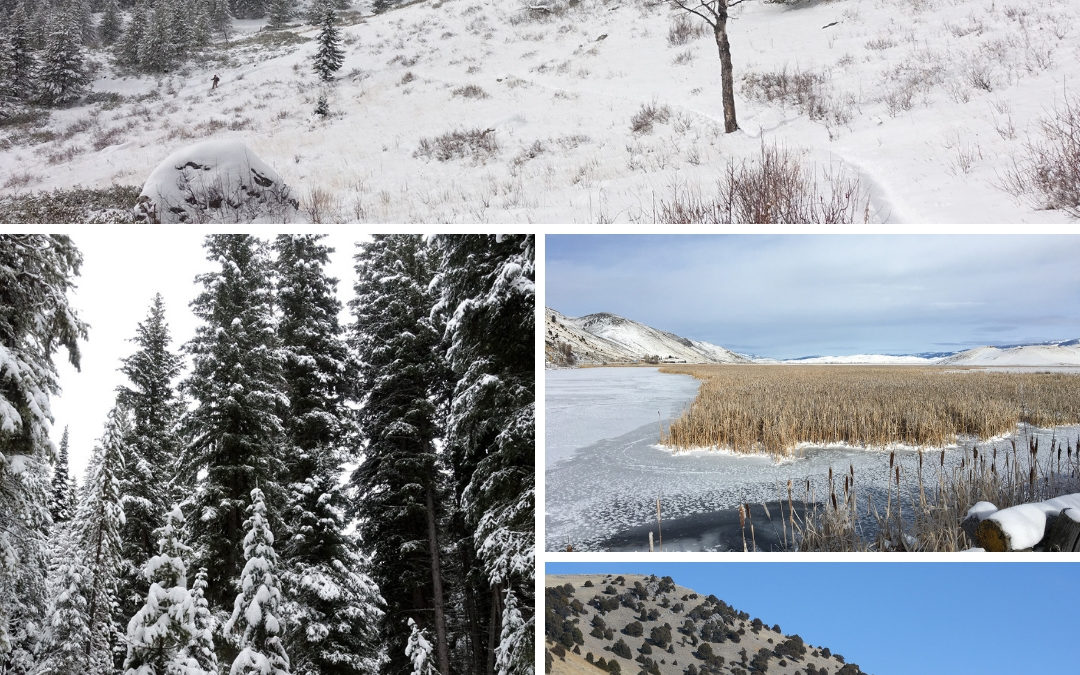
by jhwildlife | Dec 13, 2018 | Blog
By Frances Clark – Lead Ambassador, Nature Mapping Jackson Hole
Habitats and Wildlife in Winter
Wildlife habitat has changed drastically with the onset of freezing temperatures, deep snow, and short days—winter! Plants adapt by losing leaves (except for evergreens), storing starch underground, and altering physiology of cells. The landscape is primarily brown and white, with little lush green. Food and cover are scarce. Consequently, animals that don’t migrate alter their behaviors, even metabolisms, to survive. Adaptations to winter are fascinating to contemplate and observe.
Here are a few interactions that Nature Mappers can map and all can enjoy!
Dry Hillsides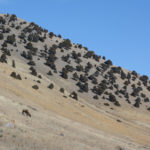
Look for Townsend’s Solitaires amidst Rocky Mountain Junipers that dot the dry slopes and ledges of buttes. Townsend’s Solitaires are a bit smaller than robins, mostly gray but with a white eye-ring and a touch of orange on their wings, which is most visible when they fly. Look up their sounds that can alert you to their presence. They can survive the winter eating silvery juniper berries (actually cones) that contain a high level of lipids, carbohydrates, and some protein. Birds are also protected from chilling winds by the thick branches. Fruit-eating Bohemian and Cedar Waxwings may also drop in and share the bounty.
Aspen Groves
Both snowshoe hares and Ruffed Grouse burrow in snow for warmth and safety and eat woody plants for food. Great Horned Owls and Northern Goshawks predate them both. A tough life.
Ruffed Grouse feature a crest of head feathers and a banded tail. They often perch on limbs of aspen trees, nibbling buds, but are very hard to see. Before aspens shed their leaves in the fall, the plants transport reserves of food and nutrients into their twigs and buds as well as roots for growth next spring. Consequently, aspen buds are relatively nutritious, but hard-to-digest, winter food. Grouse have adapted to eating this material by first consuming large amounts quickly, storing the buds in their crop, and later in a safe warm burrow of snow, digesting it slowly through an extended intestinal system.
Sometimes, we hikers and skiers (and our dogs) flush up grouse from where they lay insulated by snow.
Also, look for tracks of snowshoe hares. These elusive members of the lagomorph family browse on woody plants including aspens and pines. They too have the challenge of digesting this tough diet. As with all members of the family (rabbits and pika), the most fibrous material passes on through the digestive tract quickly, but the richer material is held back in a special chamber called a cecum. In this large pouch, bacteria and other microorganisms go to work breaking down the complex compounds. After several hours, this bacteria-infused matter is excreted as “night feces” and is then quickly eaten again. As these soft, pre-processed pellets pass through the stomach and intestines once more, the food value is extracted. The visible results are dry pellets. You may see them deposited just outside the snow burrows of hares.
Tracks of snowshoe hare can also hop into evergreen forests.
Evergreen Forest: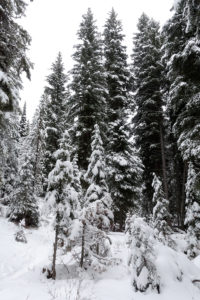
Evergreen forests—with their diverse “structure”, evergreen needles, and plentiful cones–provide cover and food for a variety of birds, small mammals, and some larger critters, such as moose and deer.
Skiing through a forest, you might spook up a Dusky Grouse. Similar in size to its cousin the Ruffed Grouse, Dusky Grouse is mottled grayish to brown with undefined tail markings. If you are lucky, you may spy the orange crest over the eye of the male. This species feeds primarily on buds and twigs of evergreens. Their chicken-like tracks can be obvious in snow.
It is easy to know if a red squirrel is present by it vociferous defense of its midden of cones. But look also for tracks or a glimpse of a Pacific marten, its main predator. Martens use branches and fallen trunks as their highways.
In the calm of snow-clad evergreens, you may suddenly hear a flurry of birds. Several different species arrive in “irruptive” flocks looking for food that is lacking in their homeland. Often species are intermixed: mixed flocks.
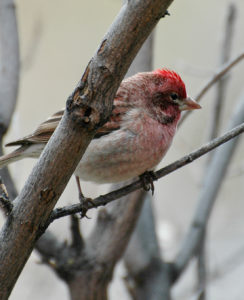
Cassin’s Finch by Susan Marsh
Red-breasted Nuthatches, with their nasal calls, glean insects from rough bark or needle bunches. Red Crossbills sweep into patches of favored cones, using their twisted bills to pry open cone scales, their spoon-like tongues to scoop the seed, and special “throat pockets” to hold the seeds until they can settle to eat. Other small forest birds can include Cassin’s Finches, Pine Siskins, and Dark-eyed Juncos. Many of these same birds may alight at a bird feeder near you.
Chickadees are not exclusive to the forest, but exemplify how small birds have adapted to extreme cold. Chickadees can stash hundreds of individual seeds and remember where they put them for over a month. They know if a seed has been taken by another and won’t waste time looking for it. Groups of 8-10 defend these storage areas with their constant chatter, signaling their dominance. These tiny birds, which weigh about the same as 2 nickels, add 10% of their body weight in fat each day and burn it up overnight to stay warm.
Energy-saving strategies include fluffing their feathers, hiding their heads under their wings, dropping their daytime body temperature by 5-11˚F, increasing their respiration rate, and even shivering to stay sufficiently warm. Chickadees can reduce their body temperature even more to 50˚F, but such a state of torpor prevents them from responding to a predator, such as a weasel or owl. And finally, chickadees may huddle together at night. Amazing. Common Redpolls, Pine Siskins, Ruby-crowned Kinglets, Red Crossbills, and White-crowned Sparrows use a variety of these same strategies.
Wetlands:
Most of our marshes, swamps, and small waterways freeze solid in winter limiting habitat of water-dependent animals.
Still, you may spy a hole where muskrats emerge onto the ice and munch a bunch of rhizomes. These 2- to 4-pound “rat-tailed” rodents must find over a pound a day of starchy rhizomes: cattails, pond lilies, rushes, or sedges to survive. They typically search within 150’ of their dens, which are built into the side of ponds, marshes, or oxbows.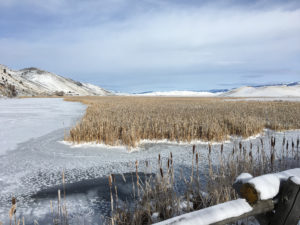
If you happen to come across a beaver dam, think about the beaver family snug in their lodge. Can you see steam coming out of the ventilation hole at the top? Imagine 40- to 50-pound adults swimming underwater for up to 15 minutes to retrieve willow stems from their winter stash. The bark and wood is a diet full of cellulose. To digest this fibrous fare, they have a similar hindgut fermentation process to snowshoe hares. And if they have limited food and it’s super cold, beavers can drop their body temperature to about 34˚F to save energy! And muskrats may come huddle a beaver family in their lodge!
Trumpeter Swans are often frozen out of favorite spots such as Flat Creek and must find other open water. If you see them tipped up, they are likely foraging with their beaks for tubers of pondweeds (Stukenia pectinatus), stems of a stiff algae called chara, and lax leaves of waterweed (Elodea canadensis). If these graceful birds are flying overhead, note where they are going. We want to protect their local movement routes, as well as open water habitats.
Ducks move in numbers from nighttime roosts and daytime feeding sites, such as from Fish Creek to the Snake River. See if you can nature map the time and direction of these twice-daily shifts.
Wide Open Spaces: 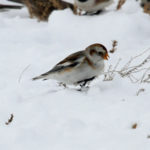
Flocks of Horned Larks and Snow Buntings feed and rest in sparse grasslands, often interspersed with seedy weeds. Buntings have migrated over a thousand miles from the arctic to be here in Jackson Hole for the winter.
Mule deer take advantage of the warmth and shallow snow on the south side of buttes, reducing their energy expenditure. Bighorn sheep find Miller Butte advantageous because ledges provide safety from predators. Moose move throughout a variety of habitats to thermal regulate (trying not to get too hot!) and find food. All these species are browsers on sagebrush, bitterbrush, and shrubby members of the rose family. Moose particularly like willow and dogwood. When you nature map, note what they are eating if you can.
In winter when green leaves have shriveled, the ungulate diet changes substantially, along with the microorganisms in their rumen. This is why feeding moose, deer, and elk can actually cause them to starve. While they may fill up with your offerings, it can take at least a week for the gut flora to adjust to changes in diet and to be able to digest the food value. To supplement their naturally meager winter diet, ungulates put on extra fat reserves before winter, which they draw upon until spring. A resting ungulate is conserving this resource.
In sum:
Wildlife are entering the most precarious time of the year. Food is less available and nutritious and it takes more energy to find it. Furthermore, predators—from wolves to goshawks to weasels–have far fewer menu options, and therefore are particularly active. Their prey—ungulates, birds, and rodents–have to spend extra energy staying vigilant. As Nature Mappers, and concerned naturalists, please share what you know about these critters, map them so we can document the places they need, and be extra careful not to disturb them. The balance of energy gained and energy lost is at a tipping point of life and death for our Jackson Hole wildlife in winter.
More links and readings:
Winter Ecology:
- Halfpenny, James C. and Ozanne, Roy D. Winter: An Ecological Handbook. Johnson Books, Boulder, CO. 1989.
- Heinrich, Bernd. Winter World: the Ingenuity of Animal Survival. Harper Collins. 2003.
For birds:
Profiles of plant and some wildlife species:
Winter tracking:
- Elbrock, Mark. Mammal Tracks & Sign: A Guide to North American Species. Stackhole Books.
Forest, Louise R. Field Guide to Tracking Animals In Snow. Stackpole Books. 1988.
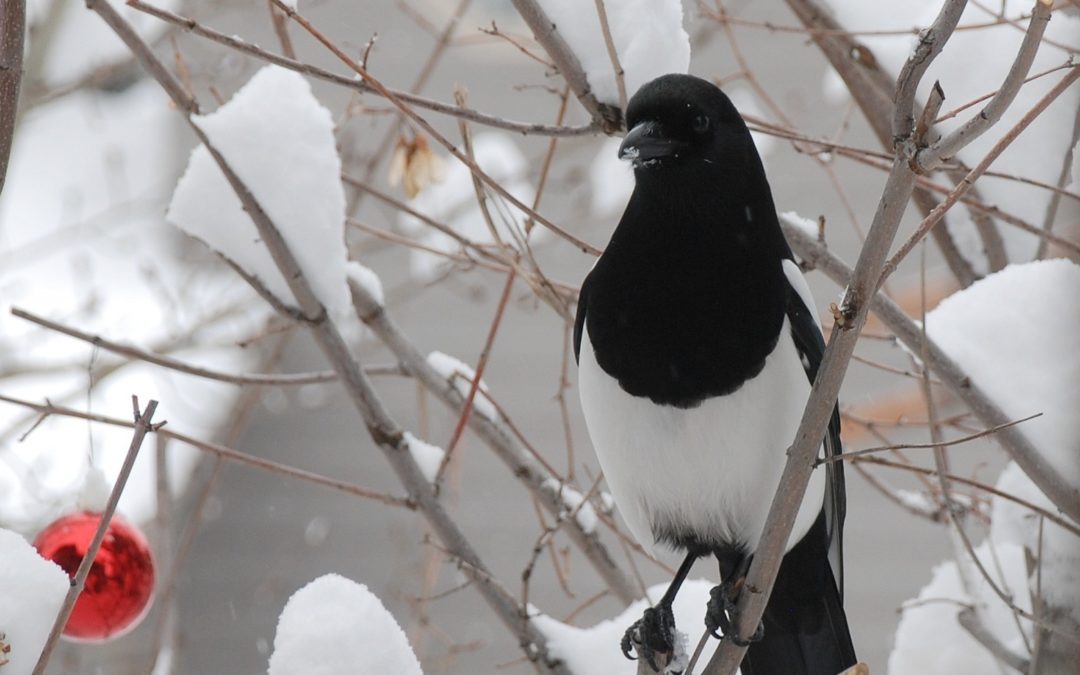
by jhwildlife | Dec 13, 2018 | Blog
Published by Kyle Kissock
Here at the Jackson Hole Wildlife Foundation we love communities coming together to engage in citizen science! This is one reason why our team is so excited to take part in the 2018 Christmas Bird Count (CBC), which is sponsored by the Jackson Hole Bird and Nature Club and will take place in Jackson on Saturday, December 15th.
It turns out, a citizen science bird count at Christmas is far from a fledgling affair. The idea was first proposed in 1900 by Frank Chapman, who worked at the American Natural History Museum in New York City. Chapman was also president of the newly formed Audubon Society and recognized declines in many avian populations due to over hunting. At the time, holiday traditions involving birds were generally lethal to the birds themselves, for example, the “Christmas Side Hunt,” which championed the individual who shot and returned home with the most feathers and furs. When Chapman and 27 volunteers set out to count, rather than kill, birds in the winter of 1900, their activity would have been quite the rarity.
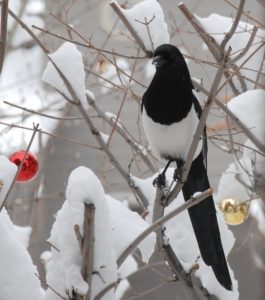 The CBC evolved from humble beginnings to include a total of 76,697 global participants in 2017.1 Last year, volunteers counted a whopping 56,000,000 individual birds. Participants here in Jackson Hole recorded a total of 59 species in our valley. This year’s count will mark the 119th anniversary of the CBC, which has blossomed into the largest, oldest, and most uninterrupted citizen science program in the world.
The CBC evolved from humble beginnings to include a total of 76,697 global participants in 2017.1 Last year, volunteers counted a whopping 56,000,000 individual birds. Participants here in Jackson Hole recorded a total of 59 species in our valley. This year’s count will mark the 119th anniversary of the CBC, which has blossomed into the largest, oldest, and most uninterrupted citizen science program in the world.
Data collected on the CBC has been invaluable to our understanding of avian population trends over time. What’s more, trends captured by the CBC are available to the public and professional scientists alike. In 2007, CBC data was used to develop the Common Birds in Decline Report. Along with the Breeding Bird Survey data, this report identified several species that have experienced precipitous declines over forty years of CBC data, including Eastern Meadowlarks, Evening Grosbeaks, and Northern Pintails, each of which experienced over 70% reduction since the mid-1960’s.2
CBC data has also been utilized in recent years by scientists seeking to understand how climate change and human influence are key players in altering ranges and migration patterns. An Audubon Climate Change Report in 2014 indicated climate change could affect ranges of 588 North American Birds.2 Some species, like Great-tailed Grackles, have increased their ranges (over 5000% according to one study) as human modified environments provide reliable food supplies and safer breeding grounds.3 Several other trends that the CBC has helped document are listed below:
- Corvids, a roosting species, have been drastically reduced by West Nile Virus – e.g. 99% mortality of American Crows who got the disease. However, there was a 70% survivorship of the closely related Fish Crow.
- The rare California Yellow-billed Magpie is also affected by West Nile.
- Common House Sparrows and European Starlings have both declined precipitously in the last few years both in this country and in their home lands in Europe. This data encourages additional research.
- Merlins, formerly a deep woods boreal falcon, are increasing. They have switched from dense forest to nesting in human altered environments even across the prairies.
If you are interested in accessing more trends, the Audubon Society is scheduled to release a trend viewer on their website in the following weeks. You can view historical CBC data by following this link to their website, including accessing data from the previous CBCs in Jackson.
And lastly if you’d like to join us and haven’t signed up for the Christmas Bird Count this Saturday, you can email the Bird and Nature Club at jhbirdclub@gmail.com sign up. Or just appear at Bubba’s, 100 Flat Creek Drive, in Jackson at 7:30 a.m. where we will gather for breakfast before dispersing in teams to our count areas. We’ll see you in the field!
- History of the Christmas Bird Count. Retrieved from audubon.org
- Butcher, G. S. and Niven, D.K. (2007). Combining Data from the Christmas Bird Count and the Breeding Bird Survey to Determining the Continental Status and Trends of North America Birds. National Audubon Society Publication. 25.
- Wehtje, W. (2003), The range expansion of the great‐tailed grackle (Quiscalus mexicanusGmelin) in North America since 1880. Journal of Biogeography, 30: 1593-1607
Thank to Frances Clark for sharing helpful notes from the 2018 Rocky Mountain Citizen Science Conference.

 January, the Jackson Hole Wildlife Foundation welcomed Bruce Pasfield to the position of Executive Board President. Bruce enters the role with multiple years of existing board experience and will replace outgoing President Aly Courtemanch, who fulfilled her six-year term at the end of 2018. We wasted no time seating our new president in the “JHWF interview hot-seat” to have Bruce introduce himself, and a bit about his vision for the organization going forward:
January, the Jackson Hole Wildlife Foundation welcomed Bruce Pasfield to the position of Executive Board President. Bruce enters the role with multiple years of existing board experience and will replace outgoing President Aly Courtemanch, who fulfilled her six-year term at the end of 2018. We wasted no time seating our new president in the “JHWF interview hot-seat” to have Bruce introduce himself, and a bit about his vision for the organization going forward:










 The CBC evolved from humble beginnings to include a total of 76,697 global participants in 2017.1 Last year, volunteers counted a whopping 56,000,000 individual birds. Participants here in Jackson Hole recorded a total of 59 species in our valley. This year’s count will mark the 119th anniversary of the CBC, which has blossomed into the largest, oldest, and most uninterrupted citizen science program in the world.
The CBC evolved from humble beginnings to include a total of 76,697 global participants in 2017.1 Last year, volunteers counted a whopping 56,000,000 individual birds. Participants here in Jackson Hole recorded a total of 59 species in our valley. This year’s count will mark the 119th anniversary of the CBC, which has blossomed into the largest, oldest, and most uninterrupted citizen science program in the world.